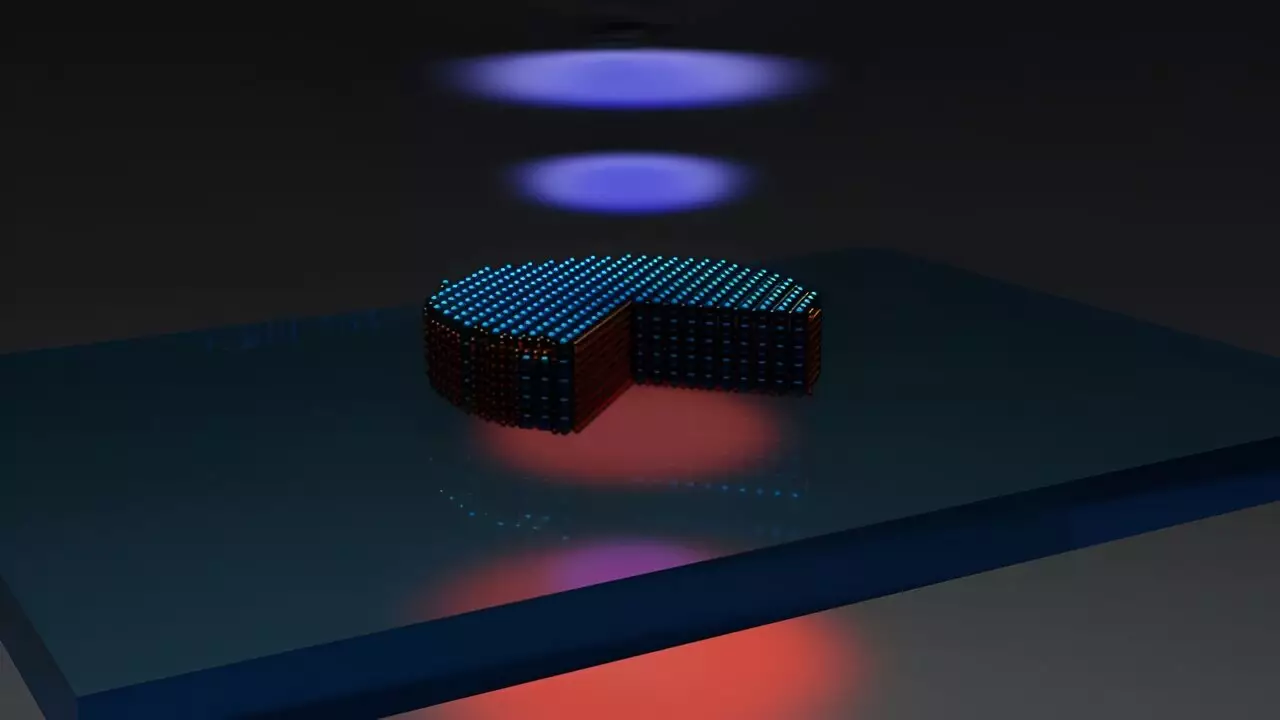The advent of nanophotonics has opened new avenues in manipulating light and its interactions with materials on a minuscule scale. With the ability to control light at the nanoscale, researchers have embarked on a journey to explore its myriad applications, ranging from telecommunications to medical diagnostics and quantum computing. Among the various breakthroughs in this field, a recent development from the Department of Physics at Chalmers University of Technology stands out, showcasing the potential to merge nonlinear optics with high-index nanotechnology in an innovative disk-like structure.
Researchers led by Dr. Georgii Zograf have unveiled a revolutionary design in the form of a nanodisk, which demonstrates extraordinary capabilities in converting light frequencies. Not only does this nanostructure measure significantly smaller than the wavelength of light, but it also boasts an impressive efficiency—reportedly up to 10,000 times more effective than traditional, unstructured materials. This remarkable achievement serves as a testament to the transformative potential that nano-structuring holds for enhancing light-matter interactions.
The foundation of this advancement lies in the careful manipulation of material and optical resonances. By integrating these essential components within the nanodisk, the researchers harness the nonlinear properties of a crystal structure, successfully enabling efficient light frequency conversion. The core material utilized, molybdenum disulfide (TMD), is an atomically thin material renowned for its optimal optical properties at ambient temperatures, presenting both opportunities and challenges in its application.
Despite its advantages, a notable obstacle that researchers encounter with molybdenum disulfide is preserving its nonlinear properties during stacking. Due to its crystalline lattice symmetry constraints, the typical stacking process may lead to a loss of these desirable optical characteristics. However, Zograf and his team’s innovative approach has allowed them to fabricate a distinctly stacked nanodisk of molybdenum disulfide that maintains the broken inverse symmetry essential for preserving optical nonlinearity. This advancement is crucial as it not only retains but amplifies the nonlinear optical properties across each individual layer of the material.
Such progress in fabrication techniques is pivotal, enabling the enhancement of the material’s intrinsic optical capabilities. As a result, the nanodisk becomes adept at localizing electromagnetic fields, facilitating phenomena such as second-harmonic generation. This nonlinear optical effect, akin to those utilized in high-energy pulsed laser systems, is a cornerstone for the nanodisk’s high efficiency and performance in diverse applications.
One of the most fascinating aspects of this research lies in the potential applications of the newly developed nanodisk. With its high refractive index—estimated at 4.5 within the visible spectrum—it represents a state-of-the-art material poised to capture significant interest from industrial sectors. The compact size of the structure, at approximately 50 nanometers, underscores its potential for miniaturization in optical circuits, dramatically differing from conventional platforms which typically range in centimeters.
This substantial reduction in size paves the way for future advancements in photonic devices. Researchers envision integrating these nanodisks into a myriad of optical circuits, promising to advance the field of nonlinear optics considerably. Furthermore, the potential for generating entangled photon pairs presents an exciting opportunity for applications in quantum technologies, underpinning the significance of these findings.
As the research team led by Professor Timur Shegai notes, this groundbreaking achievement is merely the initial step in a voyage toward more complex nonlinear nanophotonics experiments. The implications of this work are vast, offering unprecedented possibilities in creating efficient and compact optical devices. By leveraging the unique properties of TMD materials, the aim is to pioneer advancements in various realms of optical engineering, thus substantially enhancing the efficiency of integrated systems.
This promising development in nanodisk technology marks a critical juncture in the world of photonics, possibly shaping the future of optical applications. Although the researchers are aware that they are only beginning to scratch the surface of this transformative technology, their work signifies a major milestone in the journey towards redefining the limits of light manipulation and application in numerous fields.
The innovative strides made in high-index nanophotonics, particularly through the fabrication of a novel nanodisk structure from molybdenum disulfide, underscore the transformative potential of manipulating light at the nanoscale. By successfully merging nonlinear optics with cutting-edge nanotechnology, researchers have opened new possibilities for compact, efficient, and highly functional optical devices. As this field progresses, the implications for both academic research and industrial applications are vast, inviting the exploration of untapped potentials in the evolving narrative of photonics.

